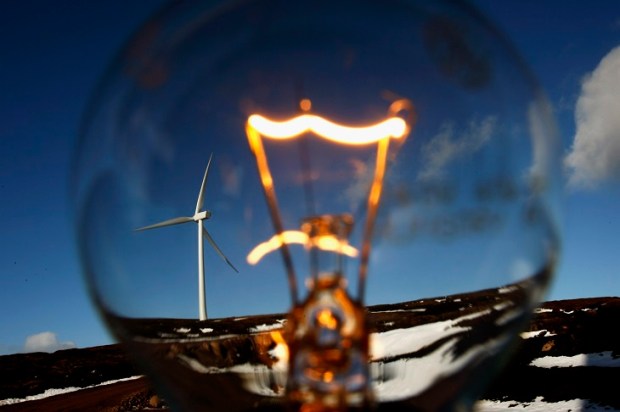Tony Abbott recommends a Coalition energy policy centred around some basic ideas such as no coal-fired power stations close without a reliable alternative; a rapid development of new gas fields; ending subsidies for new renewables; and ending the bans on nuclear.
That represents a decent start and a sharp contrast from the Albanese government’s approach, which now is set to be put deeper in place by advice from the recent Nelson review, which reported on ‘market settings to promote investment in firmed renewable generation and storage capacity’.
But Abbott’s recommendations are not good enough.
Simply calling for maintaining the existing coal-fired power stations until something comes along gives inadequate recognition to the fact that the economy’s future and our living standards depend upon harnessing domestic coal for electricity production. In the Eastern states, coal is unsurpassed anywhere in the world as the lowest-cost source of electricity. Existing coal-fired power stations should not be simply retained but built upon.
This is all the more so in view of an expanding demand for electricity. Artificial Intelligence means the world is about to experience a massive surge in demand for cheap, dependable electricity with voltage stability. This new demand builds upon the demand of energy-intensive activities, especially metal smelting, that are being closed down under Australia’s current policies. Renewables cannot compete with coal in supplying power for all of this, while nuclear will, in the coming decades, remain far more expensive; gas for the most part will likely be more valuable as an export commodity. And ‘green hydrogen’, once the Next Big Thing, is now nothing more than a stinking carcass of government largess paying for rich men’s virtue signalling.
The ongoing need of renewables for subsidies is testimony to their intrinsic uncompetitiveness. This is compounded by:
- burgeoning costs of the new transmission lines that they require (like the $11.4 billion for VNI West in Victoria and $5 billion for Central West Orana in NSW)
- the innate unreliability of wind and solar as evidenced by recent blackouts in Spain, Chile, and Texas
- the increased costs of market interventions by the operator to paper over the power reliability deficiencies of a renewable-rich grid
- the eye sores and loss of amenity that they entail
If subsidies on existing wind and solar are left in place, with lifetimes of 18 years, they will continue drawing subsidies up to 2045, even if the ALP loses the next election. Not only does this represent an ongoing cost to the electricity consumer but the subsidies would continue to keep alive a source of electricity that imposes costs on coal (by forcing it to operate sub-optimally) and therefore the electricity supply generally. Hence Abbott’s proposal to end subsidies only for new renewables represents an unfortunate lack of ambition.
Globally, the illusion of a renewable energy future is now punctured. Trump’s One Big Beautiful Bill (OBBB) removes all subsidies. In addition, the US Environment Protection Agency has lit the fuse on the ‘endangerment finding’ under which CO2 was demonised as a rationale for penalising coal and gas. The notion that CO2 as a cause of dangerous warming has long been discredited by the world’s most respected scientists and is now becoming the official US government line with the Department of Energy commissioning five extremely well-credentialed people – John Christy, Judith Curry, Steven Koonin, Ross McKitrick, and Roy Spencer. Their report titled, A Critical Review of Impacts of Greenhouse Gas Emissions on the US Climate, concludes, ‘Extreme convective storms, hurricanes, tornadoes, floods and droughts exhibit considerable natural variability, but long-term increases are not detected.’
The penultimate version of the OBBB included an excise tax on renewables to help compensate for the costs they impose by free-riding on a grid that forces other supplies into costly adaptations. While removed in the final version, doubtless this will be revisited as will other measures to curtail renewable supplies’ grid privileges.
As well as ending all subsidies, a tax on wind and solar should be introduced in Australia.
This would ensure better cost allocations and expedite removal of the grid poisoning that renewable supplies entail. Such a tax could be de facto extended to rooftop solar (the subsidies for which cannot be clawed back) by an overdue rejigging of the composition of customer charges so that the fixed charge for grid connection raises a higher proportion of total costs. This will ensure the back-up that is required, even for the homes with high solar coverage, is properly costed.
In addition, renewables should have formal requirements for remediation, as occurs in the UK and Italy (and with mining in Australia). The average turbine is estimated to cost $600,000 to dismantle – which means a dismantling cost of some $2 billion for the 3,000-plus turbines alone. At present farmers on whose land the turbines stand are unwittingly likely to be responsible for these costs.
Trump’s reversal of the Biden administration’s renewables subsidies under the absurdly named Inflation Reduction Act is a catalyst that will change all nations’ policies. Other countries are already pulling away from a renewable future. In the UK, Nigel Farage, who on present polling will win the next election, is warning renewable subsidy seekers that he will remove support on all renewables. Even within the EU, some countries, Poland especially, are re-affirming a coal-based future.
Australia’s energy subsidies were underpinned by a con-job that renewables would eventually be the cheapest form of power and that coal represented a danger by causing global warming. These twin notions are now discredited and Australia cannot be burdened for the next two decades by measures they impregnated.

























